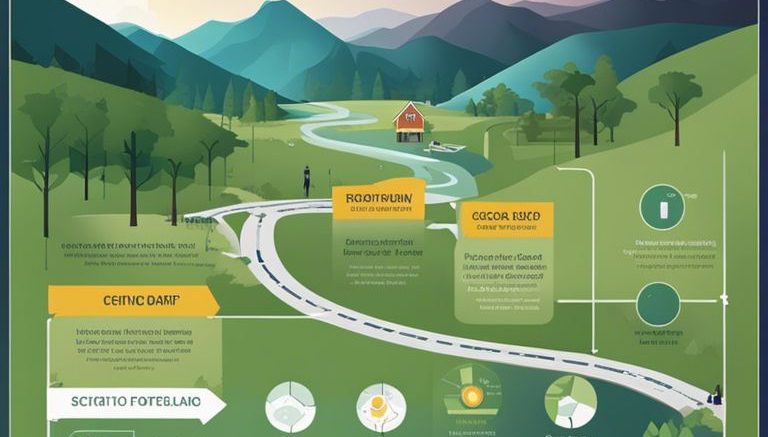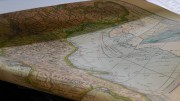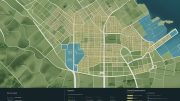You can harness the power of Geographic Information System (GIS) technology to create accurate and detailed section maps in ESRI. By utilizing GIS tools, you can efficiently organize, analyze, and visualize spatial data to generate precise sectional maps for a variety of purposes. From land surveying to urban planning, GIS technology offers numerous benefits such as improved data accuracy, enhanced decision-making capabilities, and streamlined map production processes. Let’s examine into the advantages of using GIS technology for creating section maps in ESRI.
Understanding GIS Technology
Key Components of GIS
Technology has revolutionized the way we create maps, especially in Geographic Information Systems. GIS technology integrates various components such as spatial data, mapping software, and analytical tools. These components work together to capture, store, manipulate, analyze, and present spatial or geographic data.
Integration with ESRI Software
Software plays a crucial role in the integration of GIS technology for creating section maps. ESRI, a prominent provider of GIS software, offers a suite of tools that seamlessly integrate with GIS technology. This integration allows users to leverage ESRI software such as ArcGIS to effectively visualize and analyze spatial data, ultimately leading to the creation of detailed section maps.
Integration with ESRI Software goes beyond just mapping; it enables users to incorporate various data sources, perform complex spatial analysis, and generate informative visuals for better decision-making processes.

Benefits of Using GIS for Section Maps
Enhanced Accuracy and Detail
Benefits of using GIS technology for creating section maps in ESRI include enhanced accuracy and detail. GIS allows for precise location referencing, enabling users to overlay multiple layers of information to create comprehensive section maps with a high level of accuracy.
Improved Efficiency and Time-Saving
On top of accuracy, GIS technology offers improved efficiency and time-saving benefits for creating section maps. By digitizing and automating the mapping process, GIS reduces the time and effort required to produce detailed section maps, leading to enhanced productivity and faster project delivery.
Another advantage of using GIS for section maps is the ability to quickly update and modify geographical data. Through GIS software, users can easily make adjustments to section maps in real-time, ensuring that the most current information is always available for analysis and decision-making.
Applications in Different Industries
Urban Planning and Land Management
Management in urban planning and land use involves the precise mapping of parcels, zoning regulations, infrastructure planning, and transportation networks. GIS technology aids in visualizing land parcels, identifying the suitability of land for various purposes, and analyzing the impact of new developments on the existing urban environment. By integrating various datasets like population density, land value, transportation routes, and environmental factors, GIS technology enables urban planners to make informed decisions for sustainable city development.
Environmental Conservation and Natural Resources
Applications in environmental conservation and natural resource management involve using GIS technology to monitor and manage ecosystems, biodiversity, water resources, and wildlife habitats. By overlaying layers of information such as soil types, vegetation cover, elevation, and human activities, organizations can assess the impact of human interventions on the environment and take proactive steps towards conservation and sustainable resource management.
Environmental conservation and natural resource management require a holistic approach that considers the interconnectedness of various elements in the environment. GIS technology provides a spatial framework for understanding these complex relationships and helps in designing effective conservation strategies, habitat restoration plans, and sustainable resource utilization practices.
Advanced GIS Features for Section Mapping
- 3D Visualization and Analysis
- Real-Time Data and Dynamic Updates
3D Visualization and Analysis
For advanced section mapping, GIS technology offers 3D visualization and analysis capabilities, allowing users to create realistic representations of terrain and infrastructure. This feature enables better understanding and analysis of complex spatial relationships, enhancing decision-making processes for land planning and resource management.
Real-Time Data and Dynamic Updates
The integration of real-time data in GIS technology allows for dynamic updates to section maps, ensuring that users have access to the most current information. This feature is particularly beneficial for industries such as emergency response and urban planning, where up-to-date data is critical for effective decision-making.
Another advantage of real-time data integration is the ability to track changes in real-time, enabling users to respond quickly to events or developments that may impact section maps. This feature enhances the accuracy and reliability of section mapping, making GIS technology a valuable tool for various industries.
Best Practices for Implementing GIS Technology
Data Management and Quality Control
Best practices for implementing GIS technology include ensuring proper data management and quality control processes. It is crucial to establish clear data standards, metadata documentation, and data validation procedures to maintain the accuracy and integrity of spatial data used in creating section maps in ESRI.
Collaboration and Sharing of GIS Maps
Quality collaboration and sharing of GIS maps are important components of GIS technology implementation. Utilizing collaborative platforms within ESRI, such as ArcGIS Online or ArcGIS Enterprise, enables seamless sharing and collaboration on section maps among team members, stakeholders, and decision-makers. This promotes information accessibility and enhances decision-making processes.
Effective collaboration and sharing mechanisms also streamline communication, reduce duplication of efforts, and foster a more integrated approach to section map creation and analysis. By implementing best practices for collaboration and sharing, organizations can leverage the power of GIS technology to achieve their mapping objectives more efficiently and effectively.
Conclusion
As a reminder, GIS technology offers numerous benefits for creating section maps in ESRI that enhance the efficiency and accuracy of mapping processes. The ability to overlay multiple layers of spatial data, perform complex geospatial analyses, and generate visually appealing maps makes GIS an invaluable tool for various industries. By utilizing GIS technology in ESRI, organizations can streamline their mapping workflows, improve decision-making processes, and gain valuable insights into spatial relationships. Overall, the benefits of using GIS technology for creating section maps in ESRI are undeniable and can greatly impact the quality and effectiveness of mapping projects.






Be the first to comment on "What Are The Benefits Of Using GIS Technology For Creating Section Maps In ESRI?"